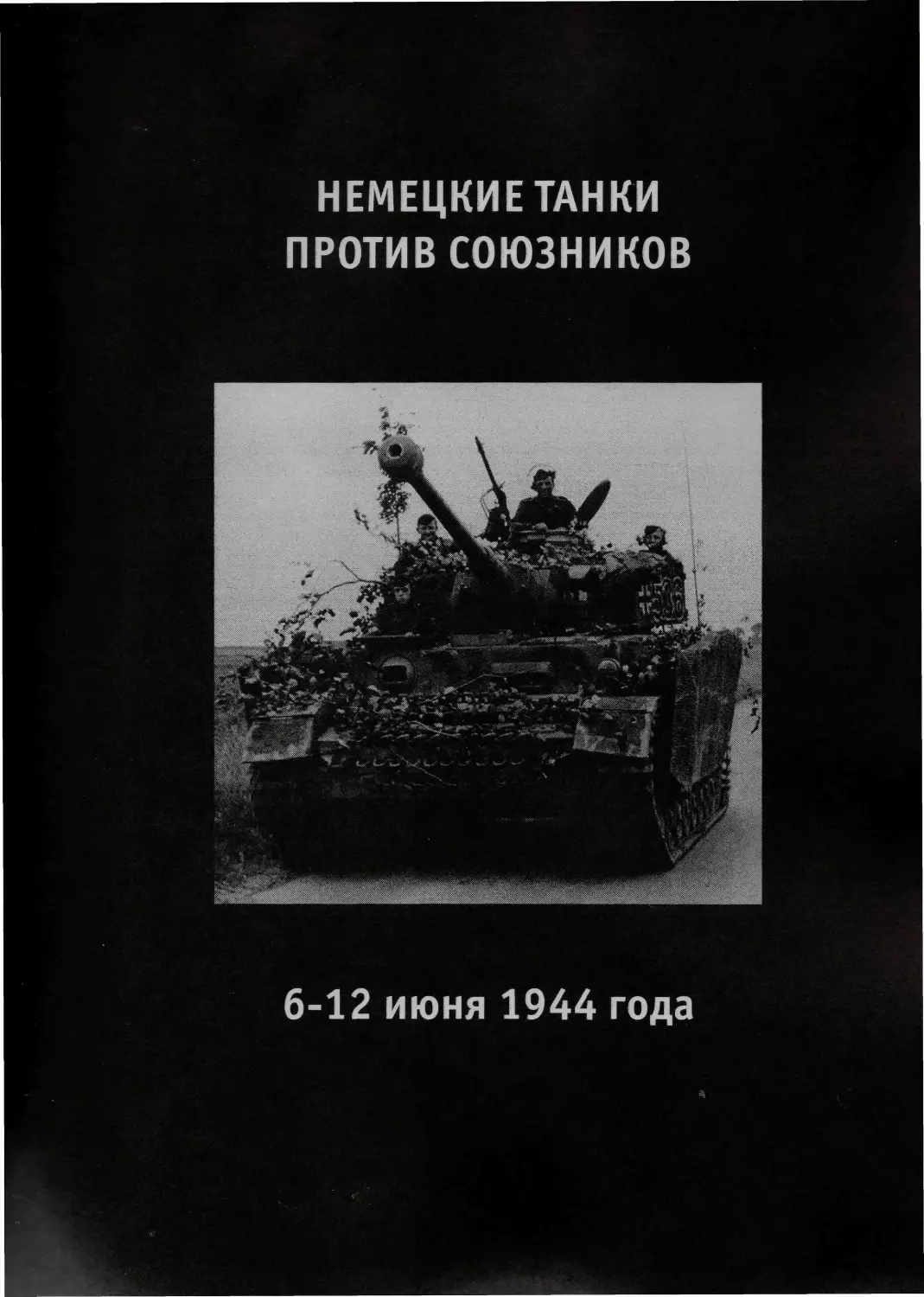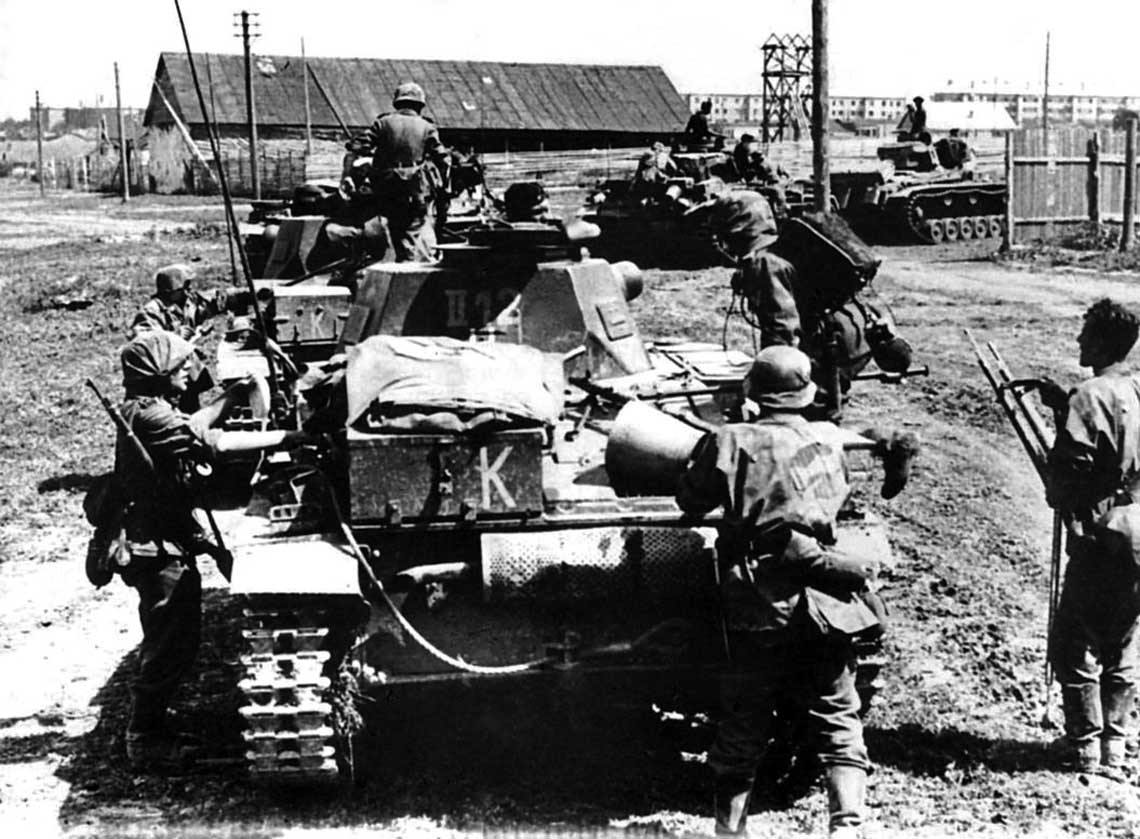
German armored divisions: January 1942–June 1944
Content
- The campaign in the Soviet Union in 1941, despite the dizzying victories won by the Wehrmacht over the demoralized and ill-trained Red Army, ended unfavorably for the Germans. The USSR was not defeated and Moscow was not captured. The exhausted German army survived the harsh winter, and the war turned into a protracted conflict that consumed a lot of human and material resources. And the Germans were not ready for this, it should not have been like that ...
- Formation of new armored divisions
- Preparing for a new offensive

German armored divisions
The campaign in the Soviet Union in 1941, despite the dizzying victories won by the Wehrmacht over the demoralized and ill-trained Red Army, ended unfavorably for the Germans. The USSR was not defeated and Moscow was not captured. The exhausted German army survived the harsh winter, and the war turned into a protracted conflict that consumed a lot of human and material resources. And the Germans were not ready for this, it should not have been like that ...
Another German offensive was planned for the summer of 1942, which was to decide the success of the campaign in the east. The tasks of the offensive were defined in Directive No. 41 of April 5, 1942, when the situation at the front stabilized and the Wehrmacht survived the winter, for which it was completely unprepared.
Since the defense of Moscow proved insurmountable, it was decided to cut off the USSR from the sources of oil - the material necessary for the war. The main reserves of Soviet oil were in Azerbaijan (Baku on the Caspian Sea), where more than 25 million tons of oil were produced annually, which accounted for almost the entire Soviet production. A significant part of the remaining quarter fell on the Maikop-Grozny region (Russia and Chechnya) and Makhachkala in Dagestan. All these areas are either in the foothills of the Caucasus, or a little southeast of this great mountain range. The attack on the Caucasus with the aim of capturing oil fields and on the Volga (Stalingrad) in order to cut the communication arteries through which crude oil was transported to the central part of the USSR was to be carried out by the GA "South", and the other two army groups - "Center" and "North "- should have gone on the defensive. So, in the winter of 1941/1942, GA "South" began to be strengthened by the transfer of units from the remaining army groups to the south.
Formation of new armored divisions
The basis for the creation of new divisions was various units, including reserve armored formations, which began to form in the fall of 1940. Four newly formed regiments and two separate battalions were equipped with captured French equipment. These units were formed between the autumn of 1940 and the spring of 1941. They were: the 201st Armored Regiment, which received the Somua H-35 and Hotchkiss H-35/H-39; 202nd Tank Regiment, equipped with 18 Somua H-35s and 41 Hotchkiss H-35/H-39s; 203rd Tank Regiment received Somua H-35 and Hotchkiss H-35/39; 204th Tank Regiment assigned to Somua H-35 and Hotchkiss H-35/H39; The 213th tank battalion, equipped with 36 Char 2C heavy tanks, was called Pz.Kpfw. B2; 214th tank battalion,
received +30 Renault R-35.
On September 25, 1941, the process of forming two more tank divisions began - the 22nd tank division and the 23rd tank division. Both were formed from scratch in France, but its tank regiments were the 204th Tank Regiment and 201st Tank Regiment respectively, and were equipped with various German and Czech equipment. The 204th Tank Regiment received: 10 Pz II, 36 Pz 38(t), 6 Pz IV (75/L24) and 6 Pz IV (75/L43), while the 201st Tank Regiment received German-made tanks. Gradually, the states in both regiments were replenished, although they did not reach the full staff. In March 1942, the divisions were sent to the front.
On December 1, 1941, in the Stalbek camp (now Dolgorukovo in East Prussia), the reorganization of the 1st Cavalry Division into the 24th Tank Division began. Its 24th tank regiment was formed from the disbanded 101st flamethrower tank battalion, supplemented by cavalrymen from the 2nd and 21st cavalry regiments of the division, trained as tankers. Initially, all three divisions had a motorized rifle brigade consisting of a three-battalion motorized rifle regiment and a motorcycle battalion, but in July 1942 the staff of the rifle brigade was disbanded and a second motorized rifle regiment was formed, and both motorized regiments were transformed into a two-battalion regiment.
Preparing for a new offensive
The Axis managed to muster about a million soldiers for the offensive, organized into 65 German and 25 Romanian, Italian and Hungarian divisions. According to the plan prepared in April, in early July 1942, GA "South" was divided into GA "A" (Field Marshal Wilhelm List), which moved to the Caucasus, and GA "B" (Colonel General Maximilian Freiherr von Weichs), heading east towards the Volga.
In the spring of 1942, the GA "Poludne" included nine tank divisions (3rd, 9th, 11th, 13th, 14th, 16th, 22nd, 23rd and 24th) and six motorized divisions (3rd, 16th, 29th, 60th, SS Viking). and Great Germany). For comparison, as of July 4, 1942, only two tank divisions (8th and 12th) and two motorized divisions (18th and 20th) remained in the Sever GA, and in the Sredny GA - eight tank divisions (1., 2nd, 4th, 5th, 17th, 18th, 19th and 20th) and two motorized (10th and 25th). The 6th, 7th and 10th armored divisions were stationed in France (aimed at rest and replenishment, later returned to hostilities), and the 15th and 21st armies and the 90th Dlek (motorized) fought in Africa .
After the division of GA "Poludne" GA "A" included the 1st Tank Army and the 17th Army, and GA "B" included: 2nd Army, 4th Tank Army, 6th Army, and also 3rd and 4th armies. Romanian army, 2nd Hungarian army and 8th Italian army. Of these, German panzer and motorized divisions were in all armies except the 2nd Army, which had no fast divisions at all.
